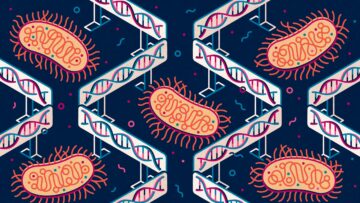Veronique Greenwood in Quanta:
 Every organism visible to the naked eye is a mass of genetically identical cells. Each of these multicellular creatures started as a single cell that divided countless times to produce its body. And while each cell contains the same genome, they express their DNA in a variety of ways, giving rise to specialized cells and tissues that perform different roles, such as skin, liver or immune cells. This complex multicellularity has evolved independently in at least five lineages: animals, land plants, brown algae, red algae and fungi.
Every organism visible to the naked eye is a mass of genetically identical cells. Each of these multicellular creatures started as a single cell that divided countless times to produce its body. And while each cell contains the same genome, they express their DNA in a variety of ways, giving rise to specialized cells and tissues that perform different roles, such as skin, liver or immune cells. This complex multicellularity has evolved independently in at least five lineages: animals, land plants, brown algae, red algae and fungi.
As different as these multicellular creatures might be, their bodies are all composed of the same type of cell — eukaryotic cells, which enclose their DNA in a nucleus and possess energy-producing mitochondria. The much older prokaryotic cells, which make up the vast kingdoms of bacteria and archaea and whose cells lack these features, never got complex multicellularity off the ground. They have evolved primitive forms of multicellularity, such as colonies of photosynthetic cyanobacteria. But there they stop. Even with a 1.5-billion-year head start on eukaryotes, prokaryotes never evolved this other way of living.
Why?
More here.
